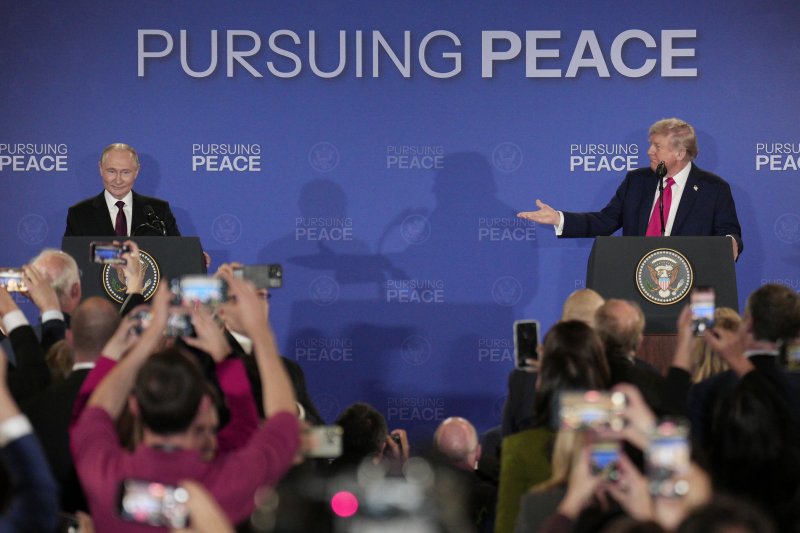Ukrainian President Volodymyr Zelensky is set to meet with U.S. President Donald Trump on August 16, 2023, at the White House. This meeting follows a significant shift in the U.S. stance regarding the ongoing conflict in Ukraine, which began with Russia’s invasion over three years ago. The change in approach emerged after Trump and Russian President Vladimir Putin failed to reach an agreement on a cease-fire during their recent summit in Anchorage, Alaska.
The meeting between Trump and Zelensky marks a pivotal moment in diplomatic efforts aimed at ending the conflict. Trump emphasized the need for a comprehensive peace agreement rather than a temporary ceasefire, which he believes often fails to hold. In a post on Truth Social, Trump stated, “It was determined by all that the best way to end the horrific war between Russia and Ukraine is to go directly to a Peace Agreement.”
During their discussions in Alaska, which lasted approximately three and a half hours, Trump also briefed European leaders on the ongoing situation before returning to Washington, D.C. He confirmed the upcoming meeting with Zelensky, noting that “if all works out, we will then schedule a meeting with President Putin,” highlighting the potential to save “millions of people’s lives.”
Zelensky expressed his gratitude for the invitation and the importance of European involvement in the peace process. He stated, “It is important that Europeans are involved at every stage to ensure reliable security guarantees together with America.” Zelensky also emphasized the urgency of achieving a lasting peace that addresses the humanitarian crisis caused by the war, including the release of all Ukrainian prisoners of war and the return of abducted children.
While the summit in Alaska was described as a “starting point for resolution” by Putin, he cautioned against any attempts by Ukraine or Europe to disrupt the dialogue. Zelensky, not invited to the summit between Trump and Putin, reiterated Ukraine’s support for a trilateral meeting involving the U.S., Ukraine, and Russia to discuss key issues directly with the leaders.
Following the summit, European leaders issued a statement stressing the necessity for Ukraine to receive “ironclad security guarantees,” insisting that “no limitations should be placed on Ukraine’s armed forces or on its cooperation with third countries.” They underscored that Russia should not have a veto over Ukraine’s aspirations toward EU and NATO membership.
In the aftermath of the discussions, Trump noted the pressing need for sanctions against Russia if they fail to engage in genuine negotiations. He stated, “Sanctions are an effective tool. Security must be guaranteed reliably and in the long term, with the involvement of both Europe and the U.S.”
Despite the diplomatic efforts, fighting continues unabated in eastern Ukraine. Following the summit, Ukrainian military reports indicated increased Russian drone activity and ongoing engagements in contested regions. Zelensky warned that the Russian army might intensify its attacks to create advantageous conditions for future negotiations.
The reaction to the summit has been largely critical, particularly from Ukrainian leaders and analysts. Many expressed concerns that the discussions may have inadvertently provided Russia with more time to consolidate its position rather than leading to a meaningful de-escalation. Ukrainian parliament member Oleksiy Goncharenko described the summit as “sickening” and indicative of a missed opportunity for peace.
As the geopolitical landscape continues to evolve, the upcoming meeting between Zelensky and Trump will be closely watched for signs of progress or setbacks in the quest for a resolution to the ongoing conflict in Ukraine.
